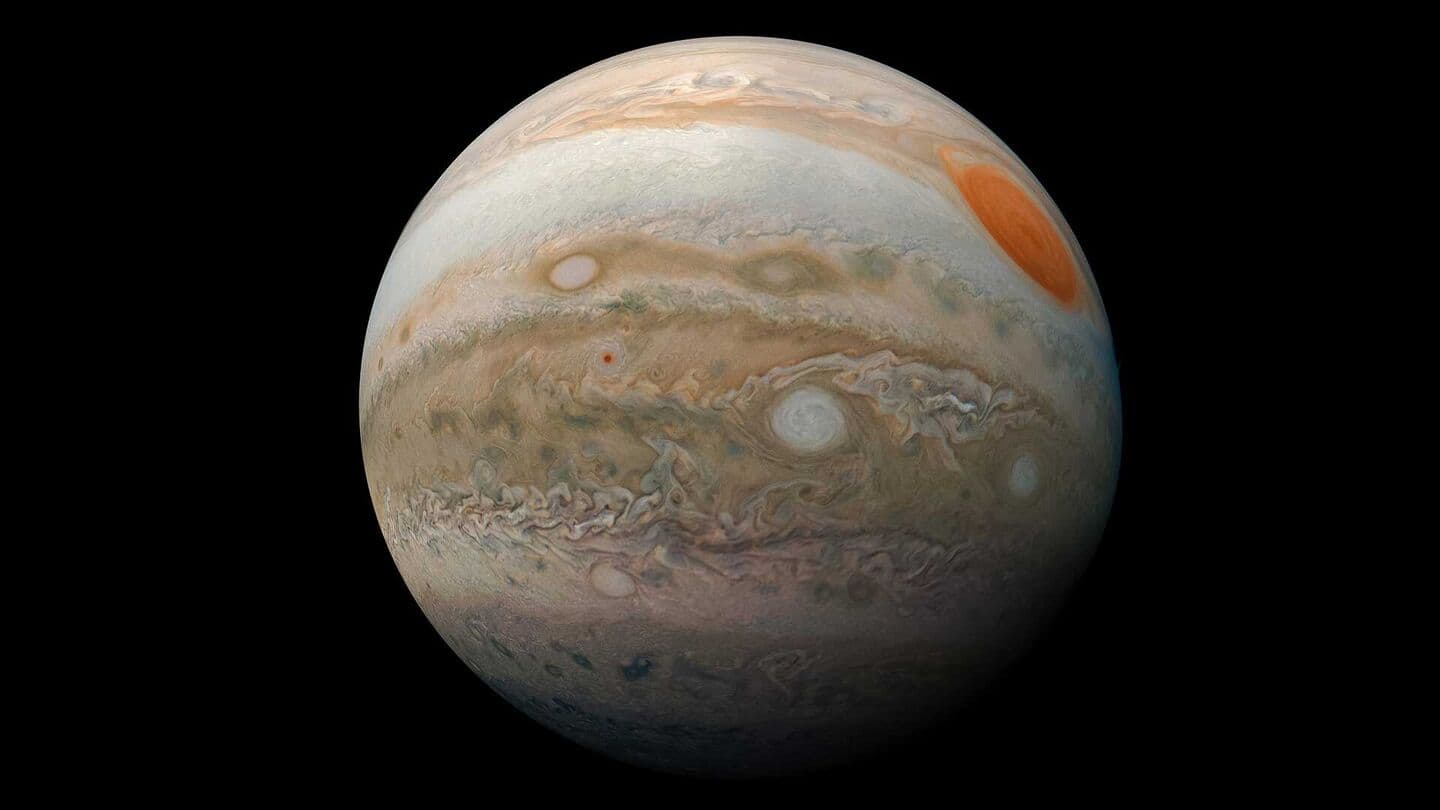
We might be wrong about how Jupiter's core was formed
What's the story
A new study from Durham University has challenged the theory that a massive collision was responsible for the formation of Jupiter's "dilute" core. The research suggests that this unique structure wasn't created by a single catastrophic event, but rather through the gradual process of how the planet absorbed heavy and light materials during its formation and evolution.
Core composition
What is a 'dilute' core?
As the largest planet in our solar system, Jupiter has always been a subject of scientific curiosity. Unlike earlier assumptions, its core doesn't have a distinct boundary but gradually merges with the outer layers of mostly hydrogen. This unique structure is what scientists call a "dilute core." The formation of this dilute core has puzzled astronomers since NASA's Juno spacecraft first observed it.
Simulation results
Simulations show impacts can't create dilute cores
The study's authors used advanced supercomputer simulations of planetary impacts to test the giant collision theory. They found that even under extreme conditions, a stable dilute core structure wasn't formed in any of the simulations. Instead, these simulations showed that an impact would quickly re-settle dense rock and ice core material, creating a distinct boundary with outer layers of hydrogen and helium instead of a smooth transition zone.
Publication
Impacts shake planets but don't explain interiors
The study's findings were published in the Monthly Notices of the Royal Astronomical Society. The lead author, Dr. Thomas Sandnes from Durham University, said their simulations show that such an impact shakes the planet to its core but doesn't explain Jupiter's interior as we see it today. This further debunks the idea that a single dramatic impact created Jupiter's dilute core.
Others
Research could aid in exoplanet studies
Interestingly, Saturn also has a dilute core, which further strengthens the idea that these structures are formed gradually during planetary growth and evolution. The study's co-author Dr. Jacob Kegerreis said while giant impacts are key to many planets' histories, they can't explain everything. This research could also help scientists understand the complex interiors of Jupiter- and Saturn-sized exoplanets observed around distant stars.